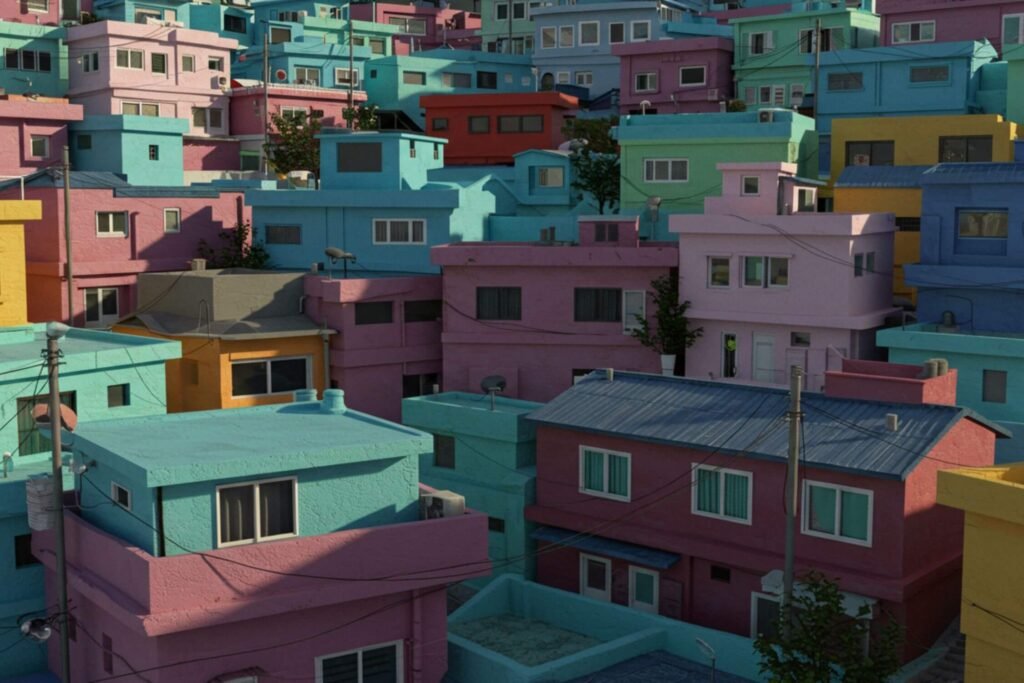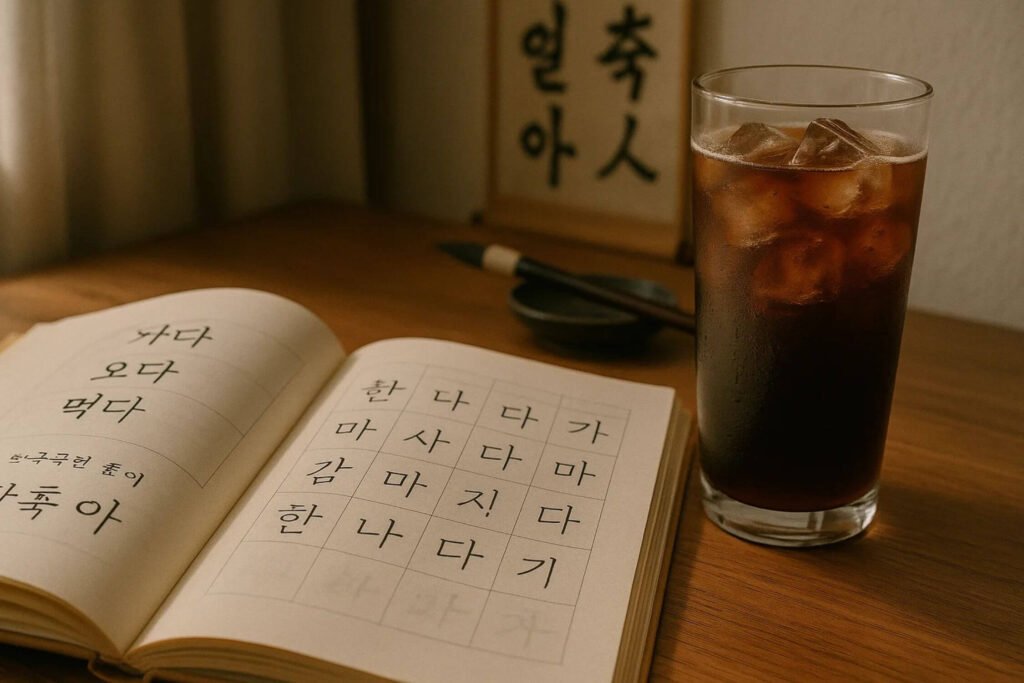When people think of South Korea, bustling cities like Seoul and Busan often come to mind. However, beyond the skyscrapers and neon lights lies a different kind of charm—the serene and picturesque countryside. South Korea is home to countless villages that have preserved their traditions, architecture, and way of life for centuries. Visiting these rural gems allows you to experience the country’s natural beauty, cultural richness, and slower pace of life.
If you’re looking to escape the city and discover Korea’s rural soul, here are the 10 most beautiful Korean villages to visit in the countryside.
1. Hahoe Folk Village (Andong)
Nestled beside the Nakdong River in North Gyeongsang Province, Hahoe Folk Village is a UNESCO World Heritage Site that has retained the traditional Joseon-era layout and architecture. With its charming tile-roofed hanoks, winding stone alleys, and scenic river views, Hahoe is often considered one of the most authentic traditional villages in Korea.
What sets Hahoe apart is that it’s still inhabited by descendants of the Ryu clan, who established the village over 600 years ago. As you wander the narrow lanes, you’ll witness daily life continuing in a timeless setting. The village also hosts masked dance performances, which are part of Korea’s intangible cultural heritage.
2. Bukchon Hanok Village (Seoul)
While Bukchon Hanok Village is located in central Seoul, it feels worlds away from the surrounding metropolis. This unique neighborhood offers a rare blend of history and modern life, as hundreds of restored hanok homes line the streets between Gyeongbokgung Palace and Changdeokgung Palace.
Walking through Bukchon is like stepping back in time, with traditional wooden homes, courtyards, and tiled roofs creating an atmosphere of elegance and peace. Though popular with tourists, it’s still a residential area, so visitors can observe a delicate balance of modern living in traditional structures. It’s an ideal destination for those who want a countryside feel without leaving the city.
3. Yangdong Folk Village (Gyeongju)
Located in Gyeongju, South Korea’s ancient capital, Yangdong Folk Village is another UNESCO-designated treasure. This village is nestled between mountains and rivers, offering a perfect natural setting that has shaped its Confucian architectural design.
Yangdong is especially striking in autumn when the surrounding hills blaze with fall colors, creating a breathtaking backdrop for the old wooden houses. What makes this village unique is its spatial arrangement, based on Confucian ideals and the social hierarchy of the Joseon Dynasty. It’s a peaceful place to reflect, take photos, and immerse yourself in a well-preserved cultural landscape.
4. Nagan Eupseong Folk Village (Suncheon)
In South Jeolla Province, Nagan Eupseong Folk Village stands as a rare example of a completely walled fortress town that dates back to the Joseon era. Surrounded by stone walls and lush hills, the village looks like a scene straight from a historical drama.
Many of the houses have thatched roofs, and local residents still farm and live much like their ancestors did. Visitors can explore the old magistrate’s office, prison cells, and watchtowers. It’s not uncommon to see reenactments of traditional ceremonies, adding a lively and interactive element to your visit. The nearby Suncheon Bay wetlands also offer incredible nature experiences, making this an ideal stop on a southern Korea road trip.
5. Oeam Folk Village (Asan)
Oeam Folk Village, located in the city of Asan in South Chungcheong Province, is a hidden gem that offers a quieter and more relaxed village experience. The village is known for its well-preserved hanok houses, meandering stone paths, and traditional gardens filled with seasonal flowers and fruit trees.
Unlike some of the more touristy villages, Oeam still feels like a lived-in community. Villagers continue to grow crops, make traditional crafts, and practice rituals passed down through generations. It’s especially enchanting in the spring and autumn when nature adds extra color to the scene. If you’re lucky, you might catch a traditional Korean wedding or seasonal festival while you’re there.
6. Jeonju Hanok Village (Jeonju)
Jeonju Hanok Village is one of the most famous traditional villages in Korea and is located in North Jeolla Province. With over 700 hanoks in a compact area, it offers a concentrated dose of history, culture, and culinary delights.
Jeonju is the birthplace of bibimbap, and no trip here is complete without trying the local version of this iconic dish. The village is also a cultural hub, featuring calligraphy workshops, traditional clothing rentals, and tea houses where you can relax after a day of sightseeing. Though it’s more commercialized than others, Jeonju Hanok Village retains enough authenticity and charm to warrant a visit.
7. Gamcheon Culture Village (Busan)
Gamcheon Culture Village is a vibrant and colorful hillside community in Busan, often nicknamed the “Machu Picchu of Korea.” While it was originally a humble settlement for war refugees, the village has transformed into an artistic enclave filled with murals, installations, and quirky architecture.
Though not traditional in the Joseon-era sense, Gamcheon tells a unique story of resilience and transformation. Narrow alleys wind through bright houses painted in pastel tones, and hidden art installations pop up at every corner. It’s a photogenic destination that offers a different kind of cultural immersion—one that blends art, history, and community.
8. Hahoe Maeul (Pyeongchang)
Pyeongchang, best known for hosting the 2018 Winter Olympics, is also home to several scenic villages worth exploring. One of them is Hahoe Maeul—not to be confused with the more famous Hahoe in Andong. This lesser-known village is tucked away in the mountains and surrounded by pine forests, offering a peaceful escape from modern life.
Traditional farming practices are still in place here, and the slow pace of life invites visitors to unwind and enjoy Korea’s natural beauty. The air feels fresher, the nights quieter, and the community warmer. It’s the kind of place where you can truly disconnect and appreciate the simple life.
9. Seongeup Folk Village (Jeju Island)
Located on the slopes of Hallasan Mountain on Jeju Island, Seongeup Folk Village offers a unique look at Jeju’s distinct island culture. The village features lava-rock walls, stone statues called dol hareubang, and thatched houses built to withstand the island’s strong winds.
What sets Seongeup apart is how different it feels from mainland Korea. The dialect, food, architecture, and customs reflect Jeju’s independent history and character. You can learn about the legendary Haenyeo women divers, explore local shrines, and enjoy fresh seafood all in one visit. With its rich heritage and dramatic natural surroundings, Seongeup is a must-see for anyone visiting Jeju.
10. Darangyi Village (Namhae)
Darangyi Village is perhaps one of Korea’s most visually stunning countryside spots. Located on the southern coast in Namhae, this terraced village is perched on a steep hillside that cascades down toward the ocean. The village is famous for its tiered rice paddies and breathtaking sea views.
Colorful roofs contrast with green fields and blue waters, creating a postcard-perfect scene that changes beautifully with the seasons. While it’s a bit off the beaten path, the journey is well worth it for those who appreciate scenic drives and tranquil landscapes. Darangyi is also a great spot for sunrise photography and coastal hiking.
Bottom line
South Korea’s countryside is full of hidden gems that offer a deeper, more personal connection to the country’s heritage and natural beauty. These villages—each with its own story, traditions, and landscape—provide an escape from the hectic pace of modern life. Whether you’re looking for historical immersion, artistic expression, or simply a quiet place to unwind, these ten beautiful Korean villages deliver unforgettable experiences.
If you’re planning a trip to South Korea in 2025, don’t just stay in the big cities. Venture out to the countryside and explore the lesser-known side of Korea that’s rich in culture, community, and soul.



